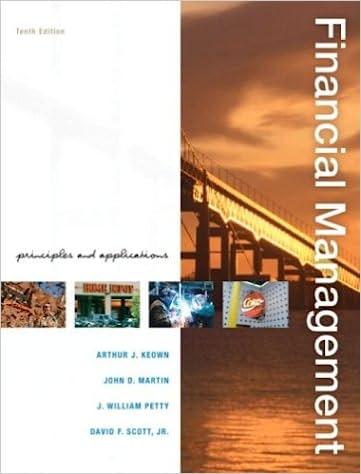Answered step by step
Verified Expert Solution
Question
1 Approved Answer
Imagine that Eva, who has a current wealth of $ 1 5 , 0 0 0 , receives an unexpected opportunity to invest in one
Imagine that Eva, who has a current wealth of $ receives an unexpected opportunity to invest in one of two startup companies. Her utility function over the wealth she will have after the investment, which equals her current wealth plus or minus any amount she gains or loses from the investment is Investment : She can invest $ in Startup A If the startup succeeds, which happens with a probability of she triples her investment; otherwise, she loses her $ investment.
Investment : She can invest $ in Startup B If this startup succeeds, which happens with a probability of she gets ten times her investment; otherwise, she loses her $ investment.
Eva is required to choose one of the two investments. Which would she prefer according to her expected utility?
a Eva would prefer Investment and it's expected utility from investment is approximately
b Eva would prefer Investment and it's expected utility from investment is approximately
c Eva would prefer Investment and it's expected utility from investment is approximately
d Eva would prefer Investment and it's expected utility from investment is approximately
Consider the theoretical concept of the riskreturn tradeoff in financial markets. Which of the following statements best captures the generally accepted relationship between risk and expected return
a The relationship between risk and expected returns is ambiguous, and thus the concept of a riskreturn tradeoff is not considered by cautious investors.
b There is a positive correlation between risk and expected return, meaning higher risk is usually accompanied by higher expected returns.
c The levels of risk and expected returns are generally not factors in investment decisions; asset selection is random.
d Increasing risk typically leads to decreasing expected returns, which is why lowerrisk assets are generally preferred.
In the theory of game design, which of the following is NOT considered one of the basic elements of a game?
a Structures
b Players
c Feedbacks
d Payoffs
TechA and TechB are deciding on a new technology standard. The payoff matrix in millions of dollars is TechAs profits are listed first, followed by TechB's:
tableTechA TechB,Adopt,Don't AdoptAdopt

Step by Step Solution
There are 3 Steps involved in it
Step: 1

Get Instant Access to Expert-Tailored Solutions
See step-by-step solutions with expert insights and AI powered tools for academic success
Step: 2

Step: 3

Ace Your Homework with AI
Get the answers you need in no time with our AI-driven, step-by-step assistance
Get Started


